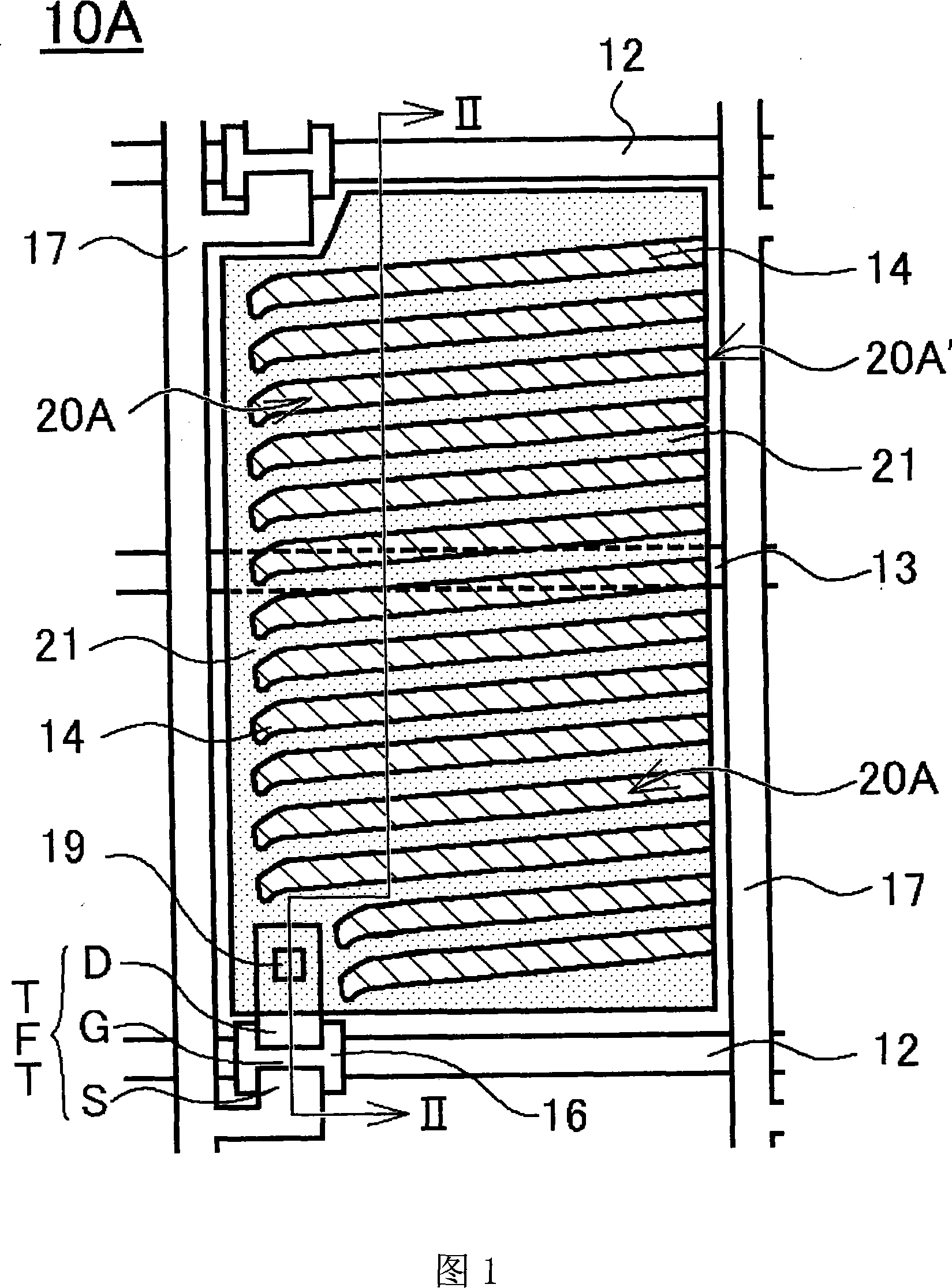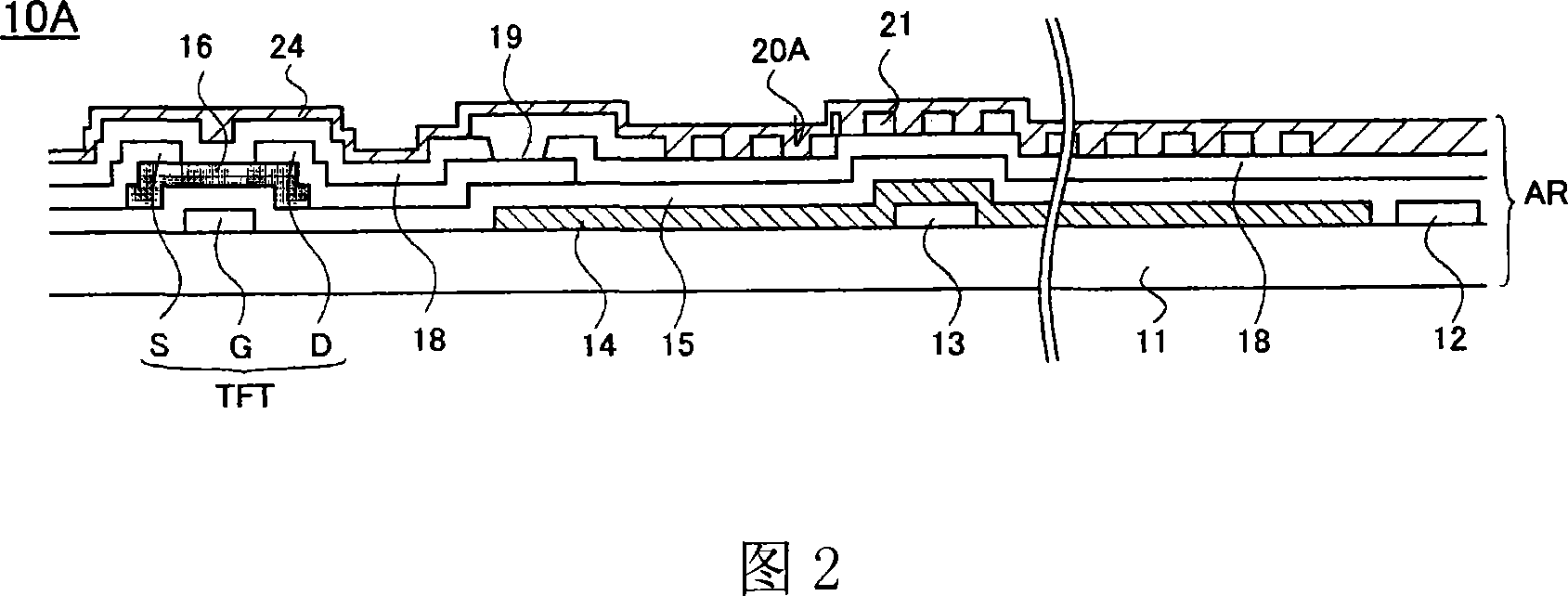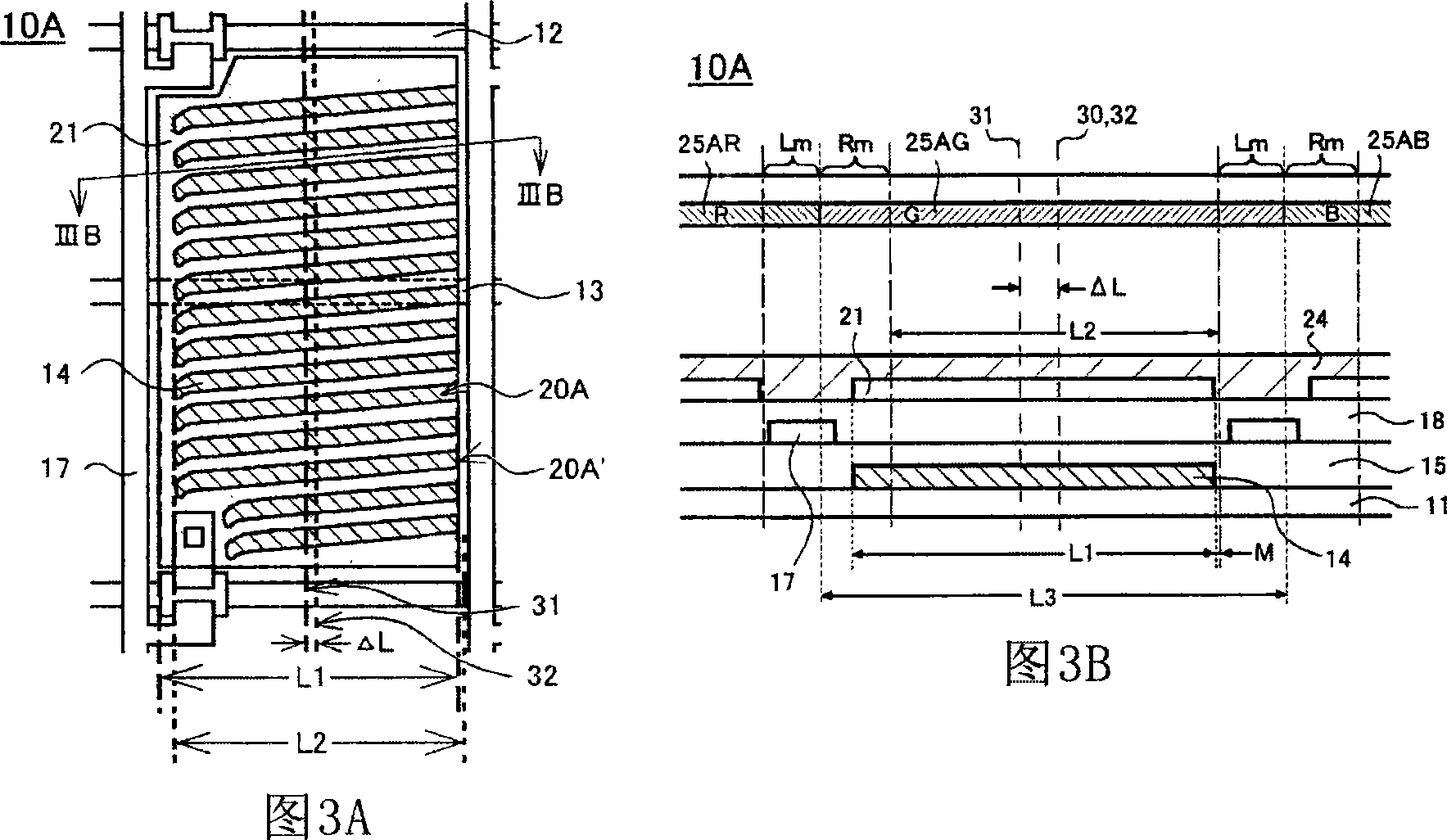Liquid crystal display panel
A liquid crystal display panel and liquid crystal layer technology, applied in static indicators, nonlinear optics, instruments, etc., can solve the problems of color change, aperture ratio and low transmittance, and achieve good display characteristics
- Summary
- Abstract
- Description
- Claims
- Application Information
AI Technical Summary
Problems solved by technology
Method used
Image
Examples
Embodiment 1
[0093] The liquid crystal display panel of embodiment 1 has: array substrate, and this array substrate has common electrode, the insulating film that is formed on the common electrode, the pixel electrode that is formed on the insulating film; There is the color filter substrate of color filter layer; The liquid crystal layer sandwiched by the color filter substrate; the liquid crystal display panel drives the liquid crystal layer through the electric field generated between the common electrode and the pixel electrode, which is also called the so-called FFS mode liquid crystal display panel. The manufacturing flow of the FFS mode liquid crystal display panel 10A of the first embodiment will be described with reference to FIGS. 1 to 3 . Wherein, Fig. 1 is a schematic plan view of one pixel of a color filter substrate and an alignment film that perspectively represents the FFS mode liquid crystal display panel of embodiment 1, Fig. 2 is a sectional view along Fig. III-II line, a...
Embodiment 2
[0107] Next, the FFS mode liquid crystal display panel 10B of the second embodiment will be described with reference to FIG. 4 . 4 is a schematic plan view showing transparently one pixel of the color filter substrate and the alignment film of the FFS mode liquid crystal display panel of the second embodiment. In FIG. 4, parts having the same structure as those of the FFS mode liquid crystal display panel 10A of Embodiment 1 shown in FIGS. 1 and 2 are denoted by the same reference numerals, and detailed description thereof will be omitted.
[0108] The difference in structure between the FFS mode liquid crystal display panel 10B of the second embodiment and the liquid crystal display panel 10A of the first embodiment is that the plurality of slits 20B arranged on the pixel electrodes 21 are arranged on the adjacent scanning lines 12 relative to each other. As for the common wiring 13 between them, they are arranged symmetrically on both sides to a state inclined in different d...
Embodiment 3
[0114] Next, the FFS mode liquid crystal display panel 10C of the third embodiment will be described with reference to FIG. 5 . Among them, FIG. 5 is a schematic plan view showing several pixels of the color filter substrate and the alignment film of the FFS mode liquid crystal display panel seen through in the third embodiment. In FIG. 5, parts having the same structure as those of the FFS mode liquid crystal display panel 10A of Embodiment 1 shown in FIGS. 2 and 2 are given the same reference numerals, and detailed description thereof will be omitted.
[0115] The difference in structure between the FFS mode liquid crystal display panel 10C of the third embodiment and the liquid crystal display panel 10A of the first embodiment is that each pixel is arranged in a triangle in a different manner on each row, and each pixel The plurality of slits 20C are inclined in opposite directions on the odd and even lines respectively, and its other structures are substantially the same a...
PUM
 Login to View More
Login to View More Abstract
Description
Claims
Application Information
 Login to View More
Login to View More - R&D
- Intellectual Property
- Life Sciences
- Materials
- Tech Scout
- Unparalleled Data Quality
- Higher Quality Content
- 60% Fewer Hallucinations
Browse by: Latest US Patents, China's latest patents, Technical Efficacy Thesaurus, Application Domain, Technology Topic, Popular Technical Reports.
© 2025 PatSnap. All rights reserved.Legal|Privacy policy|Modern Slavery Act Transparency Statement|Sitemap|About US| Contact US: help@patsnap.com



